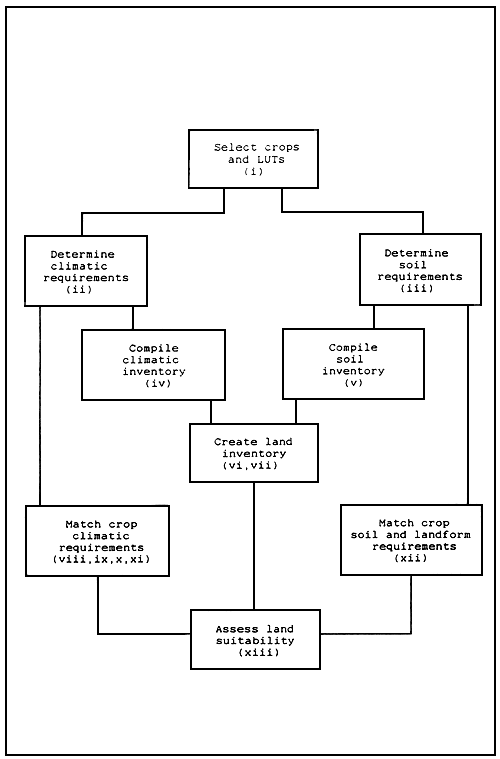The ‘Agro-ecological Land Resources Assessment for Agricultural Development Planning’ is a case study concerned with the development and implementation of a national level methodology for the determination of land use potentials of land resources of individual districts for policy formulation and development planning. This case study has been carried out by FAO and IIASA in collaboration with the Government of Kenya (FAO 1984).
The work is described in a main report entitled: Resources Data Base and Land Productivity. This main report is supported by technical annexes which deal with details.
In Part I of the crop productivity assessment model (Technical Annex 4), agro-climatic suitability is assessed first. The agro-climatic suitability is then modified by the application of soil and landform limitation ratings (agro-edaphic suitability).
Basic agro-climatic and agro-edaphic suitabilities with input specific attainable yield are available through earlier work for all crops in Table 1.1 (FAO 1978 and 1980) except for crops of barley, oat, cowpea, green gram and pigeonpea.
This report presents the basic agro-climatic and agro-edaphic suitability classifications for these five crops for rainfed conditions in Kenya.
TABLE 1.1
List of crops for rainfed productivity assessment
| Crop and Type | Scientific Name |
| Cereal: | |
| Barley | Hordeum vulgare |
| Maize-Lowland | Zea mays |
| Maize-Highland | Zea mays |
| Oat | Avena sativa |
| Pearl millet | Pennisetum americanum |
| Rice-Dryland | Oryza sativa |
| Rice-Wetland | Oryza sativa |
| Sorghum-Lowland | Sorghum bicolor |
| Sorghum-Highland | Sorghum bicolor |
| Wheat | Triticum aestivum |
| Legume: | |
| Cowpea | Vigna unguiculata |
| Green gram | Vigna radiata |
| Groundnut | Arachis hypogaea |
| Phaseolus bean1 | Phaseolus spp. |
| Pigeonpea | Cajanus cajan |
| Soybean | Glycin max |
| Root and Tuber: | |
| Cassava | Manihot esculenta |
| Sweet potato | Ipomoea batatas |
| White potato | Solanum tuberosum |
| Other: | |
| Banana | Musa spp. |
| Oil palm | Elaeis guineensis |
| Sugarcane | Saccharum officinarum |
